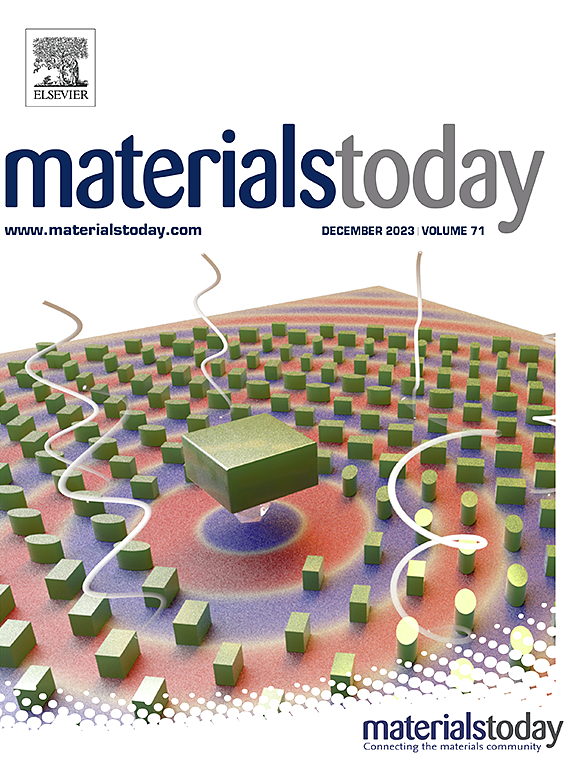Multifunctional broadband artificial visual system using all-in-one two-dimensional optoelectronic transistors
IF 21.1
1区 材料科学
Q1 MATERIALS SCIENCE, MULTIDISCIPLINARY
引用次数: 0
Abstract
The bio-inspired artificial neuromorphic visual system, which possesses integrated sensing, memory and computing functionalities, is envisioned to demonstrate great potential in overcoming the challenges of data transmission latency and high energy consumption. Huge efforts have been devoted to developing novel hardware devices to achieve the goal under various working mechanisms, which however yield limited success in emulating the full functionalities of the visual system in a single device with simplified configuration. Here, we report an all-in-one visual platform based on a multifunctional MoS2 phototransistor array fabricated on the silicon-rich silicon nitride (sr-SiNx) substrate for in-sensor computing from ultraviolet to near-infrared spectrum. The array exhibits non-volatile optical/electrical programming features through deliberately manipulating the charge storage in the sr-SiNx dielectric, which are analogous to the learning/forgetting processes in the real human visual system. These characteristics enable the integration of broadband image sensing and pre-processing, dynamic learning and noise filtering, and image recognition in a single device. The array achieves high recognition accuracy of 90.2 % (98.4 %) based on the Fashion MNIST (MNIST) database, suggesting its robust functionalities. These results envision dielectric engineering as a promising approach to realize simplified neuromorphic visual units that integrate all the fundamental functions in the bio-visual system, offering new opportunities for designing innovative neuromorphic hardware.

求助全文
约1分钟内获得全文
求助全文
来源期刊

Materials Today
工程技术-材料科学:综合
CiteScore
36.30
自引率
1.20%
发文量
237
审稿时长
23 days
期刊介绍:
Materials Today is the leading journal in the Materials Today family, focusing on the latest and most impactful work in the materials science community. With a reputation for excellence in news and reviews, the journal has now expanded its coverage to include original research and aims to be at the forefront of the field.
We welcome comprehensive articles, short communications, and review articles from established leaders in the rapidly evolving fields of materials science and related disciplines. We strive to provide authors with rigorous peer review, fast publication, and maximum exposure for their work. While we only accept the most significant manuscripts, our speedy evaluation process ensures that there are no unnecessary publication delays.
 求助内容:
求助内容: 应助结果提醒方式:
应助结果提醒方式:


